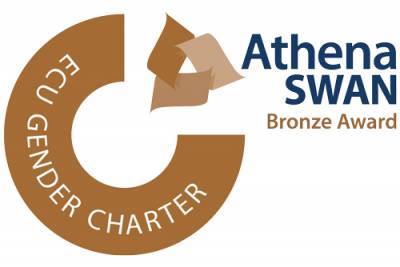
Teaching Fellow in Latin
Email: l.houghton@ucl.ac.uk
Following degrees in Classics from Oxford and Cambridge, and in Art History from the Courtauld Institute, I first came to UCL in 2005 as Postdoctoral Fellow in Latin and Reception Studies. I then spent several years as Lecturer in Classics at the University of Glasgow, before returning to the Department of Greek and Latin (and simultaneously taking up appointments at the University of Reading and at Birkbeck) in September 2014. I have held visiting fellowships at the British School at Rome, the Warburg Institute, and the Ludwig Boltzmann Institute for Neo-Latin Studies, Innsbruck.
My research focuses on Latin poetry and its reception in later art and literature, particularly during the late medieval and early Renaissance periods, and I have a strong interest in neo-Latin literature, especially the works of Petrarch and elegiac and pastoral poetry. Much of my recent work has concentrated on the reception of Virgil's fourth Eclogue, the so-called messianic eclogue, in art and literature from antiquity to the present day.
Publications
Books
Virgil’s Fourth Eclogue in the Italian Renaissance (Cambridge: Cambridge University Press, 2019)
Edited collections
[with Gesine Manuwald and Lucy Nicholas] An Anthology of British Neo-Latin Literature (London: Bloomsbury Academic, 2020)
[with Marco Sgarbi] Virgil and Renaissance Culture (Tempe: Arizona Center for Medieval and Renaissance Studies, 2018)
[with Gesine Manuwald] Neo-Latin Poetry in the British Isles (London: Bristol Classical Press, 2012)
[with Maria Wyke] Perceptions of Horace: A Roman Poet and his Readers (Cambridge: Cambridge University Press, 2009)
Edited journals
Proceedings of the Virgil Society, volume 31 (2023)
Articles in journals
‘Inter Tibullos: Name-checking Tibullus in Renaissance Latin Poetry’, Aevum Antiquum n.s. 21 (2021), 135-56
‘Astraea Revisited: The Virgilian Golden Ages of Tudor England’, Neulateinisches Jahrbuch 21 (2019), 135-68
‘Early responses to Virgil’s Fourth Eclogue’, Greece & Rome 65 (2018), 189-204
‘Nova progenies: Virgil’s fourth Eclogue and the tradition of Christian neo-Latin pastoral’, Humanistica Lovaniensia 66 (2017), 57-118
‘A hidden anagram in Valerius Flaccus?’, Classical Quarterly n.s. 67 (2017), 329-32
‘Petrarch’s Third Eclogue: The Love of Poetry and the Poetry of Love’, Neulateinisches Jahrbuch 17 (2015), 23-46
‘The Golden Age Returns: Virgil’s fourth Eclogue in the Political Panegyric of the Italian Courts’, Journal of the Warburg and Courtauld Institutes 78 (2015), 71-95
‘Salve, magna parens: Virgil’s laudes Italiae in Renaissance Italy and Beyond’, International Journal of the Classical Tradition 22 (2015), 180-208
‘Virgil’s Fourth Eclogue and the Visual Arts’, Papers of the British School at Rome 83 (2015), 175-220
‘Renaissance and Golden Age Revisited: Virgil’s Fourth Eclogue in Medici Florence’, Bibliothèque d’Humanisme et Renaissance 76 (2014), 413-32
‘Ovid, Remedia amoris 95: uerba dat omnis amor’, Classical Quarterly n.s. 63 (2013), 447-9
[with Emma Buckley] ‘Si quid mea carmina possunt… Reflections on the Virgilian Tradition’, Journal of Roman Studies 99 (2009), 207-18
‘Sexual Puns in Ovid’s Ars and Remedia’, Classical Quarterly n.s. 59 (2009), 280-5
‘Virgil the “Renaissance Man” and his Medieval Antecedents’, Proceedings of the Virgil Society 26 (2008), 89-104
‘The drowned and the saved: shipwrecks and the cursus of Latin love elegy’, Cambridge Classical Journal (PCPS) 53 (2007), 161-79
‘Tibullus’ Elegiac Underworld’, Classical Quarterly n.s. 57 (2007), 153-65
‘A Fresco Portrait of Virgil at Lucignano’, Journal of the Warburg and Courtauld Institutes 66 (2003), 1-28
Chapters in books
‘Horace and Sepulchral Sapphics – Some English Examples’, in K. A. E. Enenkel and M. Laureys (eds.), Horace across the Media: Textual, Visual and Musical Receptions of Horace from the 15th to the 18th Century (Leiden: Brill, 2022), 480-508
‘Virgil in Art’, in F. Mac Góráin and C. Martindale (eds.), The Cambridge Companion to Virgil (second edition; Cambridge, 2019), 141-70
‘Introduction: The Virgilian Panorama’, in Houghton and Sgarbi (eds.), Virgil and Renaissance Culture (above), 1-18
‘Virgil and the Idea of a Renaissance’, in Houghton and Sgarbi (eds.), Virgil and Renaissance Culture (above), 203-21
‘Elegy’, in V. Moul (ed.), A Guide to Neo-Latin Literature (Cambridge: Cambridge University Press, 2017), 98-112
‘The Scottish Fourth Eclogue’, in S. J. Reid and D. McOmish (eds.), Neo-Latin Literature and Literary Culture in Early Modern Scotland (Leiden: Brill, 2017), 74-99
‘Visibile parlare? Picturing Cicero in the Italian Renaissance’, in G. Manuwald (ed.), The Afterlife of Cicero, BICS supplement 135 (London: Institute of Classical Studies, 2016), 82-103
‘Maritime Maro: Virgil’s fourth Eclogue in Renaissance Venice’, in R. Hunter and S. P. Oakley (eds.), Latin Literature and its Transmission. Papers in Honour of Michael Reeve (Cambridge: Cambridge University Press, 2016), 171-93
‘Renaissance Latin Love Elegy’, in T. S. Thorsen (ed.), The Cambridge Companion to Latin Love Elegy (Cambridge: Cambridge University Press, 2013), 290-305
‘Epitome and Eternity: Some Epitaphs and Votive Inscriptions in the Latin Love Elegists’, in P. Liddel and P. Low (eds), Inscriptions and their Uses in Greek and Latin Literature (Oxford: Oxford University Press, 2013), 349-64
[with Gesine Manuwald] ‘Introduction: Musa Britanna’, in Houghton and Manuwald (eds), Neo-Latin Poetry in the British Isles (above), 1-14
‘Lucan in the Highlands: James Philp’s Grameid and the traditions of ancient epic’, in Houghton and Manuwald (eds), Neo-Latin Poetry in the British Isles(above), 190-207
‘Exiled Rome and august Pope: Petrarch’s Letters to Benedict XII’, in J. Ingleheart (ed.), Two Thousand Years of Solitude: Exile after Ovid (Oxford: Oxford University Press, 2011), 41-58
‘Death Ritual and Burial Practice in the Latin Love Elegists’, in V. M. Hope and J. Huskinson (eds), Memory and Mourning. Studies on Roman Death (Oxford: Oxbow Books, 2011), 61-77
‘Introduction: Veteris vestigia flammae? The “Rebirths” of Antiquity’, in A. C. Lee, P. Péporté and H. Schnitker (eds), Renaissance? Perceptions of Continuity and Discontinuity in Europe, c.1300-c.1550 (Leiden: E. J. Brill, 2010), 17-26
[with Maria Wyke] ‘Introduction: A Roman Poet and his Readers’, in Houghton and Wyke (eds), Perceptions of Horace (above), 1-15
‘Two Letters to Horace: Petrarch and Andrew Lang’, in Houghton and Wyke (eds), Perceptions of Horace (above), 161-81
‘A Letter from Petrarch’, in W. Fitzgerald and E. Gowers (eds), Ennius perennis: The Annals and Beyond (PCPS suppl. no. 31; Cambridge: Cambridge Philological Society, 2007), 145-58
Book reviews
[For reviews of J. M. Ziolkowski and M. C. J. Putnam (eds.), The Virgilian Tradition; C. Kallendorf, The Virgilian Tradition; and C. Kallendorf, The Other Virgil, see Houghton and Buckley (above)]
Review of J. A. Haynes, The Medieval Classic: Twelfth-Century Latin Epic and the Virgilian Commentary Tradition (New York: Oxford University Press, 2021), International Journal of the Classical Tradition 29 (2022), 337-42
Review of K. A. E. Enenkel and J. L. de Jong (eds.), Re-inventing Ovid’s Metamorphoses: Pictorial and Literary Transformations in Various Media, 1400-1800 (Leiden: Brill, 2021), Classical Review n.s. 72 (2022), 167-70
Review of C. Kallendorf, Printing Virgil: The Transformation of the Classics in the Renaissance (Leiden and Boston: Brill, 2020), Journal of Medieval Latin 31 (2021), 320-4
Review of J. Luggin, Thomas Hobbes, De mirabilibus Pecci carmen. Einleitung, Text, Übersetzung und Kommentar (Hildesheim: Olms, 2016), Renaissance Quarterly 71 (2018), 225-6
Review of P. Bather and C. Stocks (eds.), Horace’s Epodes: Context, Intertexts, and Reception (Oxford: Oxford University Press, 2016), International Journal of the Classical Tradition 25 (2018), 89-92
Review of L. Whittington, Renaissance Suppliants: Poetry, Antiquity, Reconciliation (Oxford: Oxford University Press, 2016), Modern Language Review 112 (2017), 981-2
Review of W. H. F. Altman (ed.), Brill’s Companion to the Reception of Cicero(Leiden: Brill, 2015), Journal of Roman Studies 107 (2017), 438-9
Review of A. Stadeler, Horazrezeption in der Renaissance. Strategien der Horazkommentierung bei Cristoforo Landino und Denis Lambin (Berlin and Boston: de Gruyter, 2015), Gnomon 89 (2017), 660-2
Review of S. Knight and S. Tilg (eds.), The Oxford Handbook of Neo-Latin(Oxford and New York: Oxford University Press, 2015), International Journal of the Classical Tradition 24 (2017), 131-7
Review of C. Kallendorf, The Protean Virgil: Material Form and the Reception of the Classics (Oxford: Oxford University Press, 2015), Classical Review n.s. 66 (2016), 565-7
Review of R. Gaskin, Horace and Housman (London: Palgrave Macmillan, 2013), Classical Review n.s. 65 (2015), 141-3
Notice of F. Giordano, Percorsi testuali oraziani. Tra intertestualità critica del testo ed esegesi (Bologna: Pàtron Editore, 2013), Classical Review n.s. 64 (2014), 627-8
Review of P. Hardie and H. Moore (eds.), Classical Literary Careers and their Reception (Cambridge: Cambridge University Press, 2010), Journal of Hellenic Studies 132 (2012), 300-1
Review of A. T. Reyes (ed.), C. S. Lewis’ lost Aeneid. Arms and the Exile (New Haven and London: Yale University Press, 2011), Journal of Roman Studies102 (2012), 402-4
Review of T. Burkard et al. (eds), Vestigia Vergiliana. Vergil-Rezeption in der Neuzeit (Berlin and New York: De Gruyter, 2010), Journal of Roman Studies101 (2011), 280-1
Review of D. S. Wilson-Okamura, Virgil in the Renaissance (Cambridge: Cambridge University Press, 2010), Classical Review n.s. 61 (2011), 469-72
Review of C. Caruso and A. Laird (eds), Italy and the Classical Tradition: Language, Thought and Poetry 1300-1600 (London: Duckworth, 2009), Journal of Roman Studies 100 (2010), 314-15
Review of A. Keith, Propertius: Poet of Love and Leisure (London: Duckworth, 2008), New England Classical Journal 37 (2010), 227-30
Review of M. P. Chatfield (trans.), Cristoforo Landino: Poems (I Tatti Renaissance Library 35; Cambridge, Mass. and London: Harvard University Press, 2008), Translation and Literature 19 (2010), 110-14
Review of J. H. D. Scourfield (ed.), Texts & Culture in Late Antiquity. Inheritance, Authority, and Change (Swansea: Classical Press of Wales, 2007), Classical Review n.s. 59 (2009), 493-5
Review of T. R. Ramsby, Textual Permanence: Roman Elegists and the Epigraphic Tradition (London: Duckworth, 2007), Classical Review n.s. 59 (2009), 142-3
Review of M. Bull, The Mirror of the Gods. Classical Mythology in Renaissance Art (London: Allen Lane, 2005), International Journal of the Classical Tradition14 (2007), 291-6
Review of E. Coutelle, Poétique et Métapoésie chez Properce (Louvain etc.: Peeters, 2005), Classical Review n.s. 57 (2007), 98-9
Review of T. S. Welch, The Elegiac Cityscape: Propertius and the Meaning of Roman Monuments (Columbus: Ohio State University Press, 2005), Journal of Roman Studies 97 (2007), 311-13
Review of T. S. Johnson, A Symposion of Praise. Horace Returns to Lyric in Odes IV (Madison: University of Wisconsin Press, 2004), Journal of Roman Studies 97 (2007), 313-14
 Close
Close



